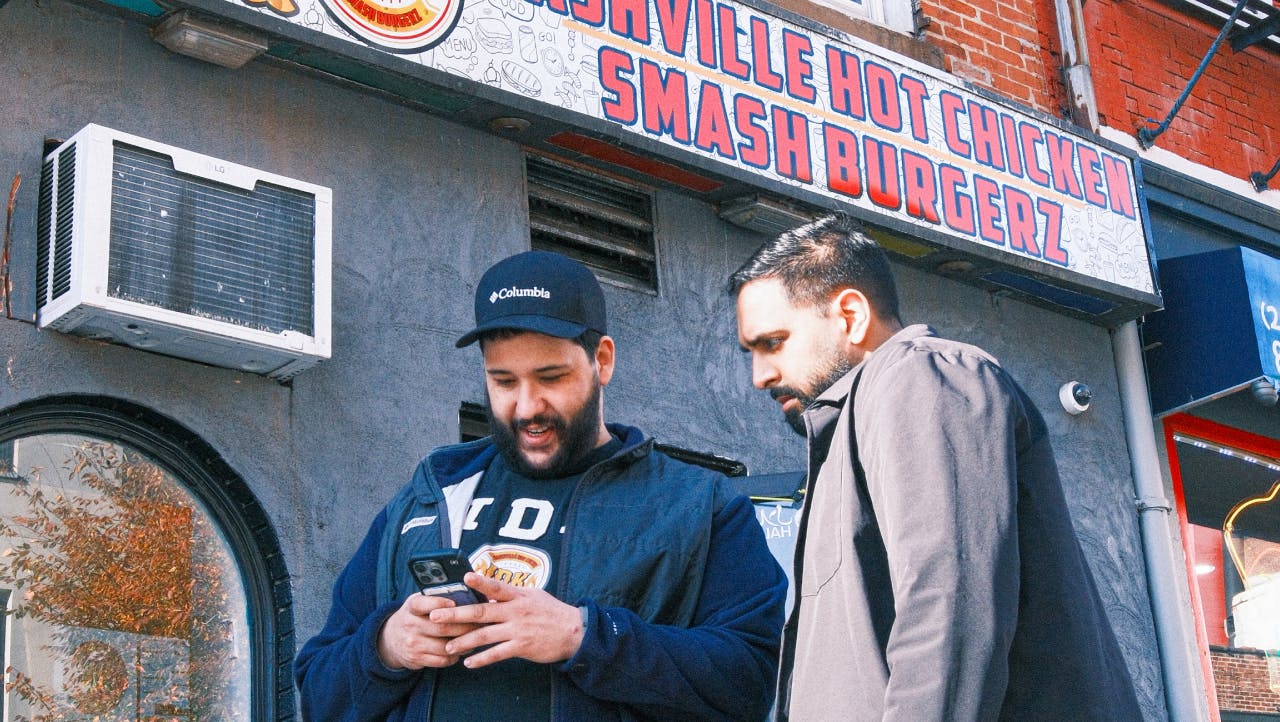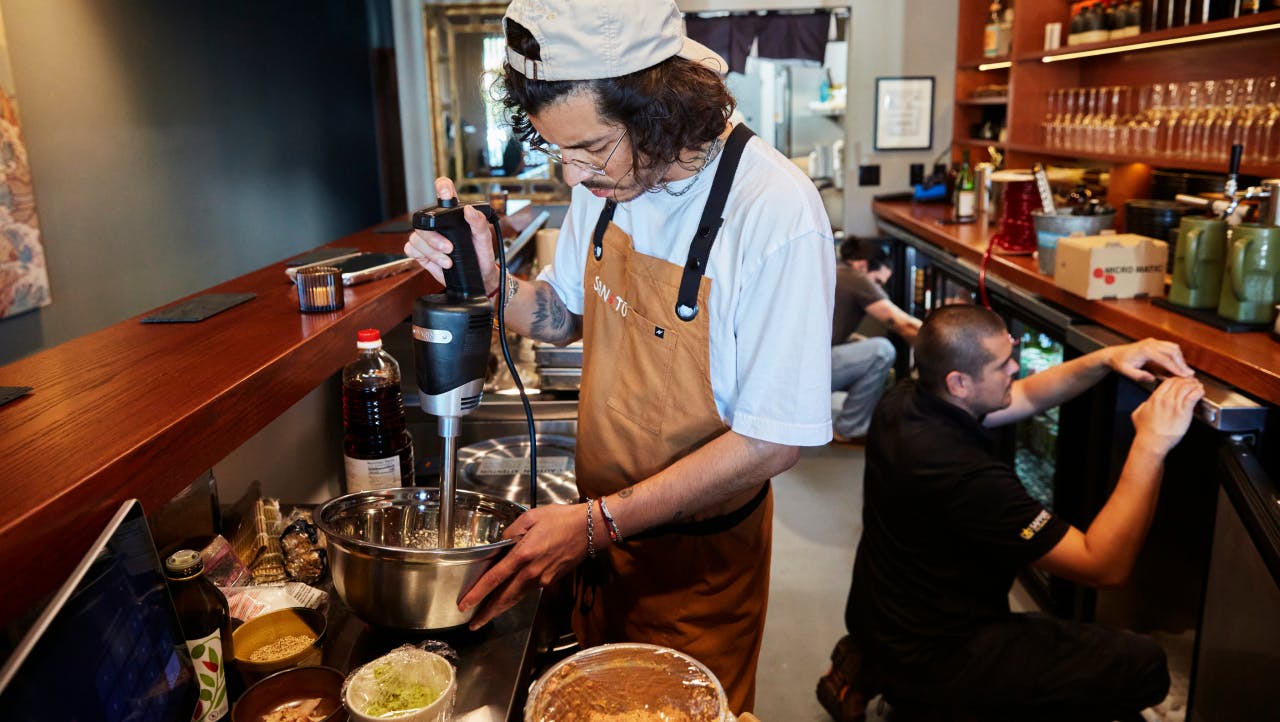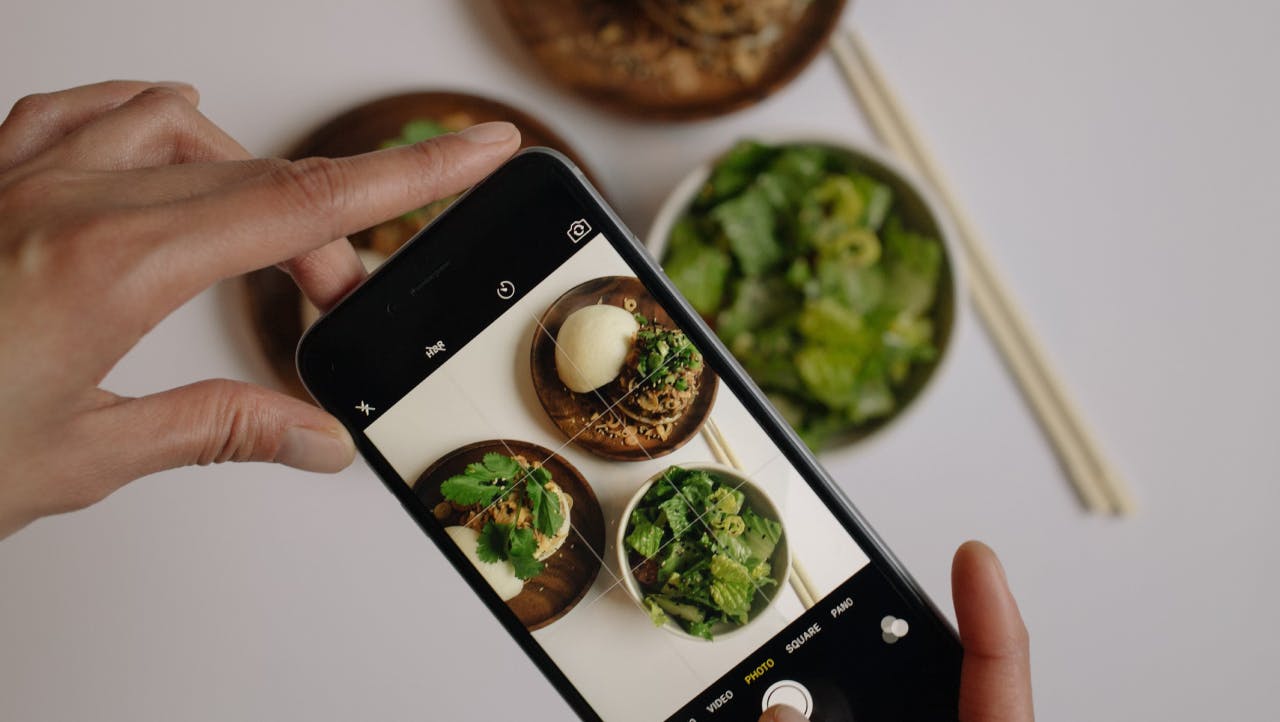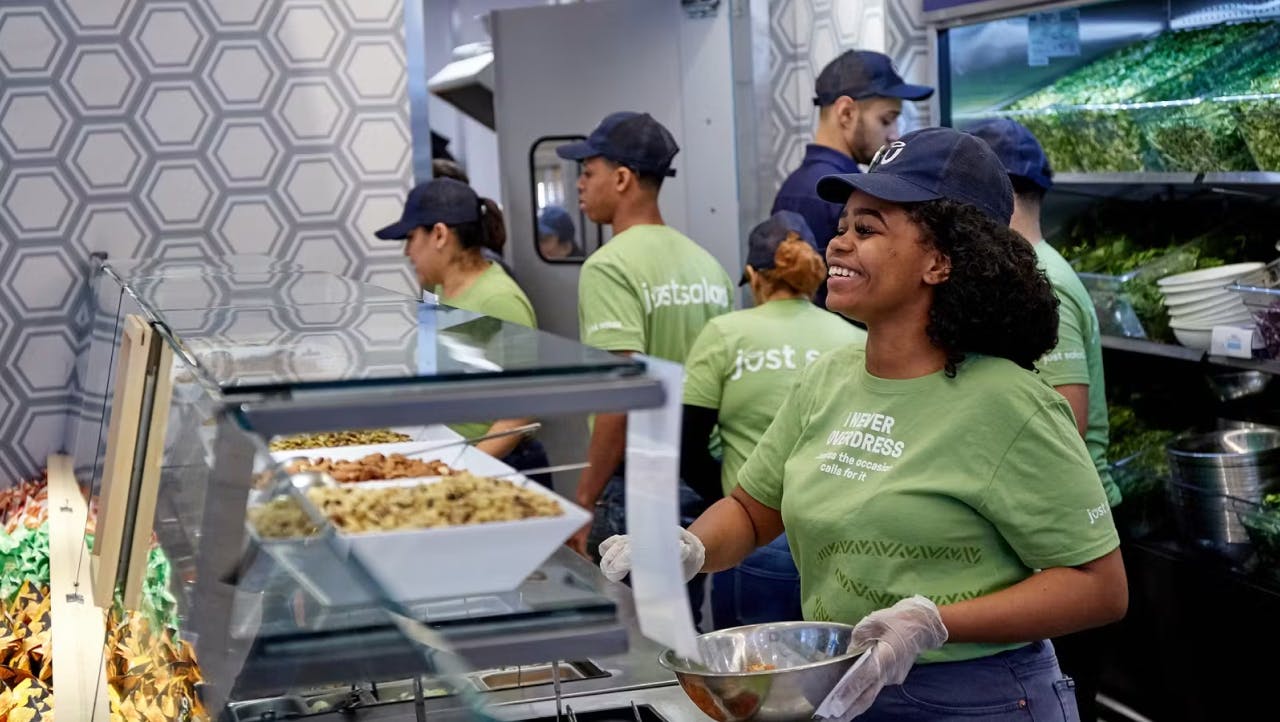
Table of contents
The restaurant world has transformed completely. Post-pandemic, diners aren't discovering their next favorite spot by wandering past storefronts. They're scrolling, swiping, and sharing their meal choices before they even leave home. Social media marketing for restaurants has evolved from optional to essential, becoming the primary driver of customer discovery, engagement, and lasting loyalty.
Whether you're running a cozy neighborhood café or managing a bustling downtown hotspot, your digital presence determines whether you become the local sensation everyone's talking about—or get lost in an increasingly crowded market.
In 2025, restaurant social media success isn't about having the biggest budget or fanciest equipment. It's about understanding your target audience, choosing the best social media platforms for restaurants and developing a comprehensive social media marketing strategy, and creating authentic content that naturally spreads.
This guide serves as your complete roadmap to mastering restaurant social media. We'll explore proven strategies for each major platform, reveal how to create scroll-stopping content, and share practical tools that streamline your entire workflow. You'll discover exactly how to promote your restaurant on social media effectively, turning every post into an opportunity for genuine connection and measurable growth.
Ready to transform your digital presence and fill more tables? Let's get started.


The best-performing content types for restaurants
Creating consistent, engaging content doesn't have to be complicated. These eight proven formats work across social platforms and can be adapted for any restaurant, from quick-service chains to neighborhood favorites. Each approach builds different aspects of your brand while driving measurable engagement.
1. Behind-the-scenes prep
- What it is: Short videos or stories showing food prep, plating, or authentic kitchen moments.
- Why it works: Builds authenticity and trust by revealing the craft and care behind every meal.
- Quick tip: Film a time-lapse of your kitchen prepping for the lunch rush. Maddogs could show their team grilling signature burgers, while Wendy's might highlight their fresh ingredient prep that sets them apart from competitors.
2. Staff stories & spotlights
- What it is: Introduce team members, share their favorite menu picks, or highlight their unique personalities.
- Why it works: Humanizes your restaurant brand and fosters genuine emotional connection with customers.
- Quick tip: Feature a "Meet the Team Monday" post. Popeyes could spotlight a long-time fry cook sharing their secret to perfectly crispy chicken, creating both authenticity and expertise.
3. Limited-time drops & new menu items specials
- What it is: Tease new menu items, seasonal specials, or flash deals with countdowns or exclusive sneak peeks.
- Why it works: Creates urgency and FOMO, driving immediate action and generating buzz around your offerings.
- Quick tip: Use Instagram Stories to launch a "secret menu" item available for just 24 hours. Wendy's could tease a new Frosty flavor with countdown stickers and behind-the-scenes creation footage.
4. Customer-generated content
- What it is: Share photos, videos, or reviews from real guests experiencing your restaurant - this user-generated content serves as powerful social proof.
- Why it works: 88% of diners trust online reviews as much as personal recommendations (4), and 22% return to a restaurant because of its social media presence (1).
- Quick tip: Run a hashtag contest for the best meal photo. Maddogs could repost customer selfies with their signature hot dogs, creating a community of brand advocates.
5. Recipe reveals & food ASMR
- What it is: Share simplified recipes, cooking tips, or satisfying ASMR (Autonomous Sensory Meridian Response) clips of food sizzling, crunching, or being prepared.
- Why it works: Taps into the "learn and relax" trend while making your brand memorable and highly shareable, especially among foodie audiences.
- Quick tip: Post a quick reel of Popeyes' chicken being breaded and fried, with crisp audio that ASMR fans crave—it's quality content that works even with sound off.
6. Time-lapse transformations
- What it is: Condense long prep processes or special events setups into fast-paced, visually compelling videos.
- Why it works: Captures attention instantly and shows effort, scale, or dramatic transformation in just seconds.
- Quick tip: Show a Maddogs dining room transforming from empty to packed during game night, highlighting both atmosphere and popularity.
7. Humor & memes
- What it is: Playful social media posts, witty social media banter, or trending memes tailored to your specific brand voice.
- Why it works: Humor is highly shareable and helps brands like Wendy's and Popeyes achieve viral reach through entertainment.
- Quick tip: Join trending challenges or create meme formats featuring your menu items. Wendy's famous "roast" responses show how humor can drive massive engagement.
8. Interactive polls & Q&As
- What it is: Use Instagram Stories, Facebook, or TikTok to ask questions, run polls, or host live Q&A sessions in real-time.
- Why it works: 71% of customers are more likely to recommend a restaurant that responds quickly on social media (5), and interaction builds deeper relationships with potential customers.
- Quick tip: Let customers vote on your next limited-time menu item or host live chef Q&As. This transforms followers into active participants in your brand story.
The key to success with restaurant social media marketing is this: consistently using the content formats that best showcase your unique personality and offerings while building genuine connections with your audience.


FAQs
How often should a restaurant post on social media?
Consistency matters more than frequency. Aim for 3-5 posts per week on Instagram and Facebook, 4-7 times weekly on TikTok for growth, and daily Stories with behind-the-scenes content. The key is maintaining a realistic schedule with quality content. Tools like Otter AI Marketing help you plan and automate posts to stay consistent without burning out.
Do I need to hire a restaurant social media manager?
Not necessarily! While a dedicated restaurant social media manager can be valuable, many restaurants manage successfully without one. With the right social media strategy and tools like Otter AI Marketing, you or a team member can handle restaurant social media effectively—even without being a social media expert.
What are the best social media platforms for restaurants?
It depends on your demographic: Instagram works best for showcasing food visually and reaching local diners. TikTok is ideal for viral content and younger audiences. Facebook excels at special events and community building. YouTube Shorts is great for storytelling. Choose social media sites where your target audience spends time and where you can consistently deliver great content.
How can Otter support my restaurant's marketing efforts?
Otter is your marketing sidekick. With Otter AI Marketing, you can automate delivery app advertising, schedule campaigns, and get real-time insights into what drives orders. Plus, Otter integrates with your existing tools, centralizing delivery data, performance metrics, and digital marketing in one system.

Book a demo to see how Otter’s all-in-one platform can help your restaurant thrive.
Social media campaigns that worked: Real-life examples
The most successful restaurant social media campaigns combine creativity, cultural relevance, and smart delivery app promotions to drive real results. Here's how three restaurants captured attention and transformed engagement into measurable business outcomes, and how Otter Marketing could help amplify similar success through coordinated delivery app advertising.
Just Salad's sustainability-driven digital engagement
What they did: Otter client Just Salad has built its restaurant brand around sustainability, encouraging customers to use reusable bowls and promoting eco-friendly habits. Their digital campaigns and app features, such as ‘Salad AI,’ focus on personalization and sustainability, helping the brand engage health-conscious and environmentally minded customers.
Why it worked: Tapping into the growing sustainability movement while showcasing authentic customer experiences makes the brand both relatable and aspirational. The visual content appeal of colorful, healthy meals combined with a meaningful mission creates content that followers actually want to share, extending organic reach and driving delivery orders from new customers.
Key takeaways: Align your campaigns with values that matter to your audience, encourage genuine user participation, and connect your social media buzz directly to delivery app promotions. Consistency in messaging across social and delivery platforms builds stronger brand recognition.
AI-powered insight: With Otter, Just Salad could optimize and automate their delivery app advertising across DoorDash, Uber Eats, and Grubhub. Otter's AI-powered platform runs in-app ads, analyzes campaign performance, helps target likely customers, and provides actionable insights to improve marketing ROI – ensuring that promotions reach the right audience and deliver measurable results.
Popeyes' chicken sandwich social media phenomenon
What they did: Popeyes' legendary chicken sandwich launch became a viral sensation through strategic social media engagement, responding to competitor challenges, and leveraging fan-generated content. They capitalized on the social buzz with exclusive delivery app promotions, including free delivery offers and bundle deals that turned viral attention into immediate sales.
Why it worked: The campaign masterfully used competitive positioning, scarcity, and cultural relevance to create genuine FOMO. By engaging directly with competitors and empowering fans to participate in the conversation, then following up with targeted delivery promotions, Popeyes turned a product launch into a cultural moment that drove massive delivery volume.
Key takeaways: Don't be afraid of friendly competition—it can amplify your message. Empower your audience to become part of the story, and be ready to capitalize on viral moments with immediate delivery app promotions that convert social buzz into orders.
AI-powered insight: Otter Marketing helps restaurants automate and optimize delivery app advertising across platforms such as Uber Eats and DoorDash. Its AI-driven system can coordinate promotions, adjust ad spend based on in-app performance, and maximize reach and conversion by managing campaigns across multiple delivery platforms, all from a single dashboard.
Dog Haus' recurring menu promotions and community building
What they did: Dog Haus, an Otter client since before the COVID-19 pandemic, regularly rolls out special menu items and has collaborated with social media influencers such as Jake Paul and Josh Elkin to generate authentic buzz and expand brand reach. These partnerships have included co-branded menu items, special events, and social media campaigns that drive engagement and attract new customers.
Why it worked: Novelty combined with consistency keeps audiences engaged and gives followers regular reasons to order. By partnering with local influencers and following up social campaigns with strategic delivery promotions, they build genuine community connections while driving measurable revenue through coordinated online and delivery channels.
Key takeaways: Fresh content and recurring specials create anticipation and habit formation. Local influencer partnerships combined with targeted delivery app advertising often deliver better ROI than broad-based campaigns, especially for building lasting customer relationships.
AI-powered insight: With Otter Marketing, restaurants can automate and optimize delivery app advertising across platforms like Uber Eats and DoorDash, scheduling campaigns for new menu specials and tracking which promotions drive the most orders.
These campaigns demonstrate that with the right mix of creativity, authentic engagement, and coordinated delivery app advertising, restaurants of any size can transform social media buzz into measurable business results—especially when social efforts are amplified through strategic delivery platform optimization.
Want to run smarter, more targeted campaigns without juggling five different tools? Explore how Otter Marketing helps restaurants optimize and run advertising campaigns across delivery apps, turning your social media buzz into measurable delivery orders.